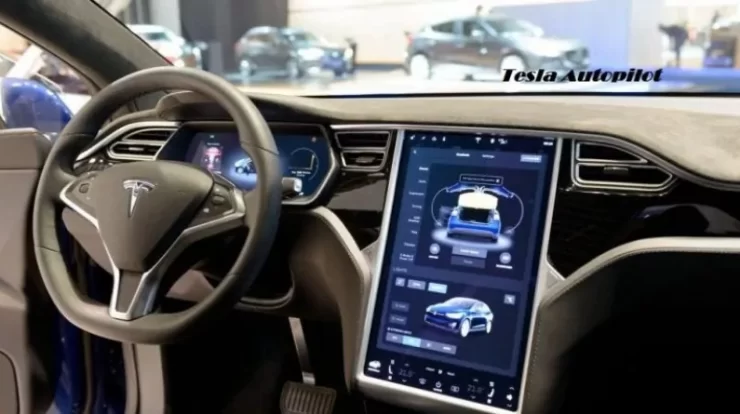
Tesla Cars Autopilot- For Tesla cars, Autopilot is an optional driver assistance system that you must buy separately. It consists of premium features for safety and comfort. Autopilot can be easily purchased as one of two packages – Autopilot or Complete self-driving capability – directly purchased via your Tesla account.
Features include the ability to steer, accelerate, and brake your Tesla vehicle – all autonomously and automatically – within its lane. Autopilot currently needs driver oversight and does not make the car “fully” independent. However, as the self-driving features of Tesla Autopilot will grow over time, Tesla said that through over-the-air software updates, your vehicle can be continuously updated to newer versions of Autopilot.
Also, read| All You Need to Know About Tesla Model 3
Table of Contents
How Do You Buy Tesla Autopilot?
You can buy the Tesla Autopilot through your Tesla Account and the software required will be added to your car. After purchasing the Tesla Autopilot, you’ll be required to operate it, following are some of the ways you can operate it –
- Enable Autopilot- Many Autopilot functions are disabled by default, such as Autosteer, Navigate on Autopilot, and Summon. You must go to the Autopilot Controls menu under the Settings tab to activate them. You need to agree to “keep your hands on the steering wheel at all times” and still “keep control and accountability in place.”
- Traffic-Aware Cruise Control: Pull down once on the cruise control stalk on the left of the steering column to use Traffic-Aware Cruise Control in the Model S and Model X. Pull down once on the gear selector stalk on the right of the column in Model 3 and Model Y.
- Autosteer- Pull twice towards you on the cruise control stalk on the steering column to use Autosteer in Model S and Model X. P0-pull down twice on the gear selector stalk on the right of the steering column in Model 3 and Model Y.
- Navigate Autopilot- You must first allow Autosteer (Controls > Autopilot > Autosteer) to begin using this feature, and then enable the Navigate to Autopilot feature. Camera calibration will be needed and you will need to download the latest version of Navigation Maps via Wi-Fi. To trigger it, you can press the Navigate on Autopilot button in your Navigation Turn List for each route where Navigate on Autopilot is available. (At any time, you can also enable Navigate on Autopilot.)
What Is The Price Of Tesla Autopilot?
Either before purchasing your Tesla vehicle or after it has been shipped, you can buy Autopilot. The packages available and their rates are as follows:
- Autopilot: $2,000 in the US.
- Full Self-Driving Capability: $10,000 in the US.
Which Vehicles Have Tesla Autopilot?
Since 2016, all new Tesla cars have been fitted with the requisite Autopilot hardware, including eight 360-degree cameras, 12 ultrasonic sensors, forward-facing radar, vision processing tools, an onboard computer, and more. This machine can see simultaneously in any direction, and it essentially drives the self-driving abilities of Tesla. Just one camera and older radar and ultrasonic sensors are used in vehicles installed between September 2014 and October 2016.
As mentioned earlier, to leverage this hardware and use Autopilot in your car, you must buy one of Tesla’s two Autopilot packages. From the touchscreen, you can check the configuration of your car: Select Controls > Software > Confirm Computer Type Autopilot > Press Additional Vehicle Details.
What Conclusions Were Made After Tesla’s Autopilot Tests?
Most features, including the Autopark self-parking system that has been around for many years, performed inconsistently in Tesla’s Maximum Self-Driving Capability package. Parking space would often be recognized as necessary, and park in it. But later, when it drove through the same space again, it was as if there were no parking spaces.
When activated, Navigate on Autopilot allows a Tesla driving on the highway to take on and off-ramps autonomously and make lane changes as long as a destination has been programmed into the navigation system. It was found that the performance was inconsistent, with the system often missing exit ramps on the set path, driving in the carpool lane, and for long periods remaining in the passing lane. The role would also, for no apparent cause, disengage fully at times.
Unless the driver overrides the mechanism, Traffic Light and Stop Sign Control are programmed to come to a full stop at all stoplights, except when they are green. With this method, it was found some issues, including the fundamental idea that it goes against standard driving behavior for a car to start slowing down to a stop for a green light. At times, even though the merger was obvious, it also drove through stop signs, slammed on the brakes for yield signs, and stopped at every exit when going around a traffic circle.
Conclusion
The active driving assistance systems of Tesla are divided into two parts: the first, Autopilot, which includes adaptive cruise control (Tesla refers to this as Traffic-Aware Cruise Control), and assistance capabilities for lane maintenance (Autosteer in Tesla terminology), is now standard on every new Tesla.
Tesla’s Autopilot is undoubtedly quite ahead of its time, however, it does need some advancement, too. There are some certain things that they are lagging with the whole Autopilot concept and that need to be fixed. Having said that, Tesla’s Autopilot mode has saved a lot of cars from crashing, too, and that can not be left unseen.
If you want to know more about Tesla Cars, you can check out https://www.tesla.com/.